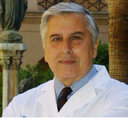Scientific Program

Segundo Mesa Castillo
Hospital of Havana, Cuba
Title: About the etiology of Schizophrenia lecture to residents in psychiatry
Biography:
Segundo Mesa Castillo. As Specialist in Neurology, he worked for 10 years in the Institute of Neurology of Havana, Cuba. He has worked in Electron Microscopic Studies on Schizophrenia for 32 years. He was awarded with the International Price of the Stanley Foundation Award Program and for the Professional Committee to work as a fellowship position in the Laboratory of the Central Nervous System Studies, National Institute of Neurological Diseases and Stroke under Dr. Joseph Gibbs for a period of 6 months, National Institute of Health, Bethesda, Maryland, Washington D.C. USA, June 5, 1990. At present he is member of the Scientific Board of the Psychiatric Hospital of Havana and give lectures to residents in psychiatry.
Abstract
There is increasing evidences that favor the prenatal beginning of schizophrenia. These evidences point toward intra-uterine environmental factors that act specifically during the second pregnancy trimester producing a direct damage of the brain of the fetus [1]. The current available technology doesn't allow observing what is happening at cellular level since the human brain is not exposed to a direct analysis in that stage of the life in subjects at high risk of developing schizophrenia. Methods. In 1977 we began a direct electron microscopic research of the brain of fetuses at high risk from schizophrenic mothers in order to finding differences at cellular level in relation to controls. Results. In these studies we have observed within the nuclei of neurons the presence of complete and incomplete viral particles that reacted in positive form with antibodies to herpes simplex hominis type I [HSV1] virus, and mitochondria alterations
- Next Generation DNA Sequencing
- Molecular Biology Techniques
- Sequencing & Microarrays
- DNA Replication & Recombination
- Computational Molecular Biology & Biochemistry
- Molecular Biology & Biomarkers
- Recombinant DNA Technology
- RNA Processing & Protein Synthesis
- Clinical Biochemistry
- Proteomics in Biochemistry & Molecular Biology
- Nano Biochemistry
- Bioorganic & Biological Chemistry
- Glycobiology in Biochemistry & Molecular Biology
- Plant Biochemistry
- Protein & Analytical Biochemistry

